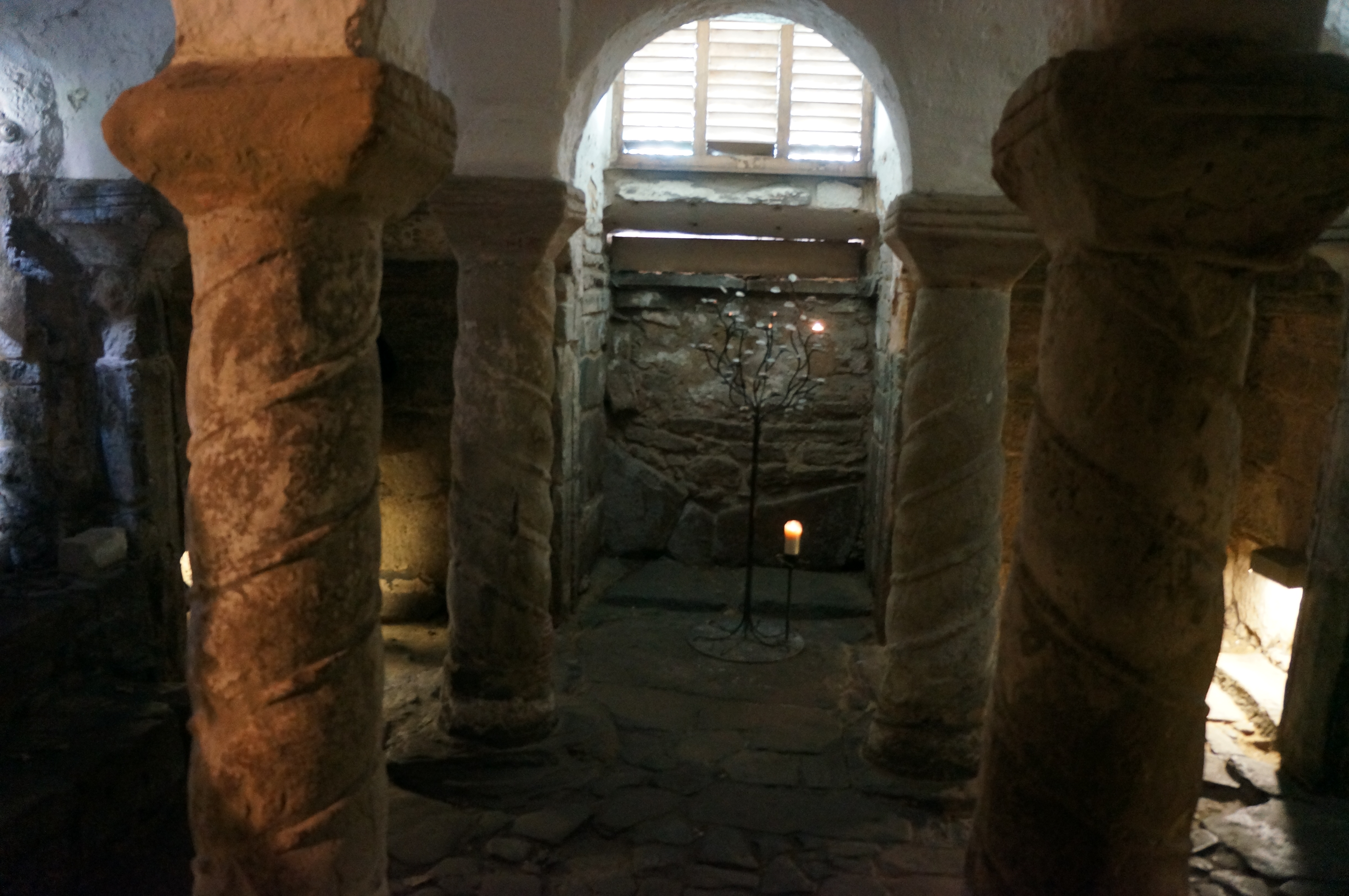
June 16, 2017, by Judith Jesch
Repton in the Viking Age
One of the aims of our project is to find out more about what happened in the East Midlands in the Viking Age. A key site near to our Nottingham base is Repton, in Derbyshire. This was an important centre of the Anglo-Saxon kingdom of Mercia, and the burial site of several of its kings. It was also the site of a winter camp of the Great Viking Army in 873-4, as recorded in the Anglo-Saxon Chronicle. The site was excavated between 1974-1993, first by Harold Taylor, and then by Martin Biddle and Birthe Kjølbye-Biddle. Their results have never been fully published, though a preliminary report appeared in Vikings and the Danelaw (ed. Graham-Campbell et al., 2001). Many of the finds from the old excavations can be seen in our project partner Derby Museum and Art Gallery.
There are still many mysteries surrounding the site, and in particular the significance of the many Viking Age burials around the church and in the Vicarage garden. It is therefore really good news for our project that Cat Jarman and Mark Horton of the University of Bristol are excavating at Repton once again. As well as digging in the Vicarage garden, they are re-evaluating the Biddles’ results using new methods such as isotope analysis and improved radiocarbon dating. We look forward to new answers to questions such as ‘Was Repton a winter camp along the lines of Torksey (also on the River Trent)?’ or ‘Who exactly was buried at Repton and how did they die?’. Even if we don’t get final answers to these questions, the finds being uncovered at Repton suggest that there will at least be a lot of new and interesting information.
The project members got to see some of these new finds and meet the excavators on a recent field trip to Repton organised by the Centre for the Study of the Viking Age. Twenty-five members of staff, postgraduate students and even a few American visitors were treated to a very special guided tour of the Anglo-Saxon crypt in St Wystan’s Church, the small museum in Repton School, and the Bristol excavations in the Vicarage garden. We finished it all off with tea and cakes served in the church. Many thanks to Cat and Mark, to the vicar Martin Flowerdew and his parishioners, and to Repton School for welcoming us earlier this week.
And do keep an eye out for further information about Repton in the Viking Age in our exhibition Bringing Vikings Back to the East Midlands which opens in December.


You suggest that the late Professor Harold Taylor started the campaign of excavations at Repton the main phase of which began in the 1970s and ran for most of the 198Os. This is not quite what I understand to be the case.
My understanding is that Harold Taylor (originally a mathematician but later a university administrator) became a leading authority on Anglo-Saxon architecture, publishing three substantial volumes in the process. One of the Saxon churches that he studied in depth from the 1960s was St Wystan’s in Repton where the crypt is believed to the tomb of several kings of Mercia. Harold Taylor’s examination was, however, confined to the upstanding fabric of the church. Only when some issues clearly could not resolved by examination of upstanding fabric did he call upon the Biddles, who had already established a reputation for meticulous excavations at the Saxon cathedral at Winchester to look at buried remains did the programme of excavations begin. It was the Biddles who directed the programme of excavations at Repton whilst Taylor continued to study the fabric of the church.
It’s wrong to suggest that hat Harold Taylor first lead the excavations at Repton which began in 1974. Taylor was a remarkable man, a mathematician and physicist from New Zealand who developed an interest in Anglo-Saxon architecture.
His researches at Repton began in 1971 with him studying the standing structure of the church of St Wystan.
It was only when he understood that a study of the building fabric alone could not answer all of his questions that he invited the Biddles to carry out an excavation in the area of the chancel. The excavations started in 1971 and were always directed by the Biddles.